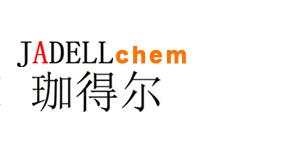Recombinant Human Transforming Growth Factor β3 是一个多功能细胞因子,可参与细胞分化,胚胎发生和发育。
Synonyms
rHuTGF-β3; TGFB3; LAP
Species
HumanSource
HEK 293 Accession
P10600 Gene ID
7043 Molecular Weight
Approximately 12.7 kDa AA Sequence
ALDTNYCFRN LEENCCVRPL YIDFRQDLGW KWVHEPKGYY ANFCSGPCPY LRSADTTHST VLGLYNTLNP EASASPCCVP QDLEPLTILY YVGRTPKVEQ LSNMVVKSCK CS Biological Activity
The ED50 is <0.2 ng/mL as measured in a cell proliferation assay using mouse HT-2 cells. Appearance
Lyophilized powder. Formulation
Lyophilized after extensive dialysis against 4 mM HCl. Endotoxin Level
<1 EU/μg, determined by LAL method. Reconstitution
Reconstitute the lyophilized recombinant Human Transforming Growth Factor beta3 (HEK293-expressed) (rHuTGF-β3) to 100 μg/mL using ddH2O. Storage & Stability
Lyophilized recombinant Human Transforming Growth Factor beta3 (HEK293-expressed) (rHuTGF-β3) is stored at -20°C. After reconstitution, it is stable at 4°C for 1 week or -20°C for longer. It is recommended to freeze aliquots at -20°C or -80°C for extended storage. Shipping
Room temperature in continental US; may vary elsewhere. Background
Transforming growth factor-β (TGF-β) is a glycoprotein that acts as a cytokine. This multifunctional cytokine has a pivotal role in the regulation of many cellular activities, such as proliferation, differentiation, and other functions, and also plays a role in immunity, cancer, heart disease, diabetes, Marfan syndrome, Loeys–Dietz syndrome, Parkinson's disease, and AIDS. Three TGF-β isoforms have been found in mammals: TGF-β1, 2, and 3, which are structurally and functionally similar. Transforming Growth Factor β3 expression increases in fetal wound healing and reduces fibronectin and collagen I and III deposition, and also improves the architecture of the neodermis which is a combination of blood vessels and connective tissue during wound healing[1]. Transforming Growth Factor β3 has been found to have an important role in normal developmental biology including systems such as the heart, lung and breast and to display isoform-specific biology at both the in vivo and in vitro level[2]. |



